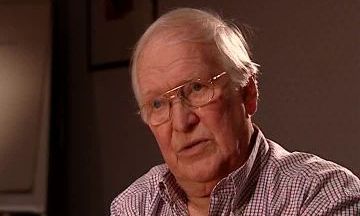NEXT STORY

Comparing our pancreatic cancer treatment with placebos
RELATED STORIES

NEXT STORY

Comparing our pancreatic cancer treatment with placebos
RELATED STORIES


|
Views | Duration | |
|---|---|---|---|
| 21. The gastrin story | 300 | 07:18 | |
| 22. Increasing incidences of oesophageal adenocarcinoma? | 94 | 06:12 | |
| 23. Working on a gastrin antagonist | 105 | 02:23 | |
| 24. Testing the effects of blocking gastrin on nude mice | 95 | 02:47 | |
| 25. Experimentally treating pancreatic cancer patients | 114 | 03:23 | |
| 26. Comparing our pancreatic cancer treatment with placebos | 110 | 05:22 | |
| 27. The beta blocking story | 1 | 129 | 06:55 |
| 28. Realising a new drug is needed for heart failure | 1 | 90 | 04:14 |
| 29. An innovative look at beta blockers | 99 | 04:37 | |
| 30. Inspiration from a Hammersmith Medicines Research report | 105 | 04:32 |


The late Scottish pharmacologist Sir James W Black (1924-2010) revolutionised medical treatment of hypertension and angina with his invention of propranolol, the first ever beta blocker. This and his synthesis of cimetidine, used for the treatment of peptic ulcers, earned him the Nobel Prize in Physiology or Medicine in 1988.
Title: Experimentally treating pancreatic cancer patients
Listeners: William Duncan
After graduating with a BSc Bill Duncan went on to gain a PhD from Edinburgh University in 1956. He joined the Pharmaceuticals Division of ICI where he contributed to the development of a number of drugs. In 1958, he started a collaboration with Jim Black working on beta blockers and left ICI with him in 1963 to join the Research Institute of Smith Kline & French as Head of Biochemistry. He collaborated closely with Black on the H2 antagonist programme and this work continued when, in 1968, Duncan was appointed the Director of the Research Institute. In 1979, he moved back to ICI as Deputy Chairman (Technical), a post he occupied until 1986 when he became Chairman and CEO of Coopers Animal Health. He ‘retired’ in 1989 but his retirement was short-lived and he held a number of directorships in venture capital backed companies. One of his part-time activities was membership of the Bioscience Advisory Board of Johnson and Johnson who asked him to become Chairman of the Pharmaceutical Research Institute of Johnson and Johnson in New Jersey. For personal reasons he returned to the UK in 1999, but was retained by Johnson and Johnson until 2006 in a number of senior position in R&D working from the UK. From 1999 to 2007 he was a non-executive director of the James Black Foundation. He is now fully retired.
Tags: King's College London
Duration: 3 minutes, 23 seconds
Date story recorded: August 2006
Date story went live: 02 June 2008